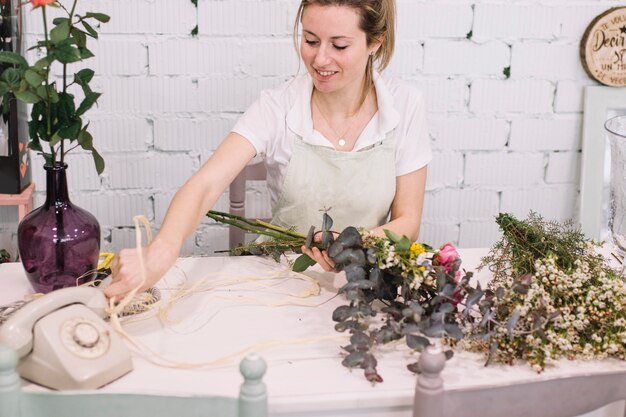The O Gauge Majestic Flower Mill is a staple for model train enthusiasts, blending craftsmanship with nostalgia. This iconic piece doesn’t just add character to a model layout; it tells a story of industrial charm. Whether you’re expanding your collection or starting fresh, understanding its unique features and the way it enhances any model world is key. In the following sections, you’ll discover what makes the Flower Mill special, how it fits into a layout, and why collectors are drawn to it. Keep reading to explore everything this timeless model has to offer.
Table of Contents
The History and Significance of the Majestic Flower Mill
The O Gauge Majestic Flower Mill has a rich history rooted in the tradition of model railroading. Its design draws inspiration from the early 20th-century American flower mills that played a significant role in local economies. These mills were not only functional but also represented the heart of many communities, processing flowers and grains for various purposes.
As model railroading gained popularity in the mid-20th century, enthusiasts sought to recreate the charm of these historical structures in their layouts. The Flower Mill quickly became a beloved addition, appreciated for its intricate details and craftsmanship.
Collectors value the Majestic Flower Mill for more than just its aesthetics. It serves as a connection to a bygone era, evoking memories of simpler times when local businesses thrived. The model captures the essence of rural life, making it a staple in many collections.
Beyond its historical significance, the Flower Mill contributes to storytelling within model train setups. It provides a backdrop for countless narratives, allowing hobbyists to create scenes that reflect daily life in a small town. This narrative potential makes the Flower Mill not just a decorative element but a focal point in many layouts.
Overall, the O Gauge Majestic Flower Mill stands out due to its historical roots and its ability to enrich the model railroad experience. Its blend of functionality and charm continues to attract both collectors and hobbyists, solidifying its place in the world of model trains.

Design and Materials: What Makes the Flower Mill Stand Out?
The O Gauge Majestic Flower Mill is a remarkable piece that showcases exceptional design and craftsmanship. Its aesthetic appeal lies in its detailed construction, which captures the essence of traditional flower mills. The model features a combination of realistic architectural elements, vibrant colors, and intricate detailing that make it a focal point in any layout.
One of the standout features of the Flower Mill is its structure. Built with a sturdy base, the model reflects the typical layout of a historical mill, complete with a peaked roof and spacious loading areas. The use of high-quality materials, such as wood and metal, enhances its durability while providing an authentic look. Each section is meticulously crafted to mimic the original mills, from the grain silos to the working parts inside.
Color plays a significant role in the Flower Mill’s design. The exterior often showcases a combination of bright and rustic hues, reminiscent of the vibrant flowers processed within. This color palette not only attracts attention but also blends seamlessly with other elements of a model train world. The combination of earthy tones and brighter colors allows the mill to stand out without overpowering the overall scene.
Details such as signage, window frames, and textured surfaces elevate the model’s realism. These features invite viewers to appreciate the craftsmanship up close, making it a delight for both casual observers and serious collectors. The artistry extends to the mill’s interior, where miniature machinery can be visible, giving a glimpse into the workings of a traditional flower mill.
In addition to its visual appeal, the design of the Flower Mill allows for versatility in model layouts. Whether set in a bustling town or a serene countryside, it adapts well to various themes. This adaptability makes it a popular choice among model railroaders looking to enhance their setups.
Overall, the design and materials of the O Gauge Majestic Flower Mill contribute significantly to its status as a beloved model. The attention to detail, quality craftsmanship, and historical accuracy combine to create a piece that not only enhances visual interest but also enriches the narrative potential of any model train layout.
How Does the O Gauge Majestic Flower Mill Work?
The O Gauge Majestic Flower Mill is not just a decorative piece; it has a functional design that enhances the realism of model train setups. Understanding how it operates adds another layer of appreciation for this intricate model.
At its core, the Flower Mill is designed to simulate the workings of a traditional flower mill. The structure typically includes various components that represent the processing and transportation of flowers. These features help create a dynamic scene within the model layout.
One of the main operational elements of the Flower Mill is its conveyor system. This component mimics the way flowers would be moved from one area to another within an actual mill. The conveyor often includes moving parts that can be powered by the train’s electrical system or a separate motor. This movement adds life to the model, drawing attention and enhancing the storytelling aspect of the layout.
Another critical feature is the loading dock. This area is designed for trains to “deliver” supplies or pick up finished products. Miniature figures can be added to simulate workers, further bringing the scene to life. The loading dock typically includes ramps and storage areas that reflect real-world operations, showcasing how products would be loaded onto rail cars.
Inside the mill, you might find detailed machinery, such as grinders and mixers, which represent the milling process. These components, while often static, contribute to the authenticity of the model. They provide context for the flower mill’s function, allowing viewers to understand the process behind flower production.
Lighting is another important aspect of the Flower Mill’s operation. Many models incorporate LED lighting to illuminate the interior and exterior, creating a warm and inviting atmosphere. This illumination not only enhances visibility but also adds an inviting glow that can be particularly striking at night.
Incorporating the O Gauge Majestic Flower Mill into a model train layout adds a functional and narrative-rich element. Its moving parts, loading capabilities, and realistic design contribute to the overall experience, making it an engaging addition for both builders and observers. The operational features of the Flower Mill help create a lively scene that celebrates the charm of model railroading while paying homage to historical flower mills.
Customizing and Personalizing the Flower Mill
Customizing the O Gauge Majestic Flower Mill offers a unique opportunity for hobbyists to create a model that reflects their personal style and preferences. Modifications can range from simple aesthetic changes to complex enhancements, making each model distinct and tailored to individual tastes.

One of the easiest ways to personalize the Flower Mill is through painting and detailing. Many enthusiasts choose to repaint their models to better fit the color schemes of their layouts. Using weathering techniques can add realism, giving the mill an aged look that mimics years of operation. Subtle shading and highlighting on surfaces can enhance texture and depth, making the structure stand out even more.
Adding miniature figures can also enhance the Flower Mill’s charm. Placing workers, customers, or even animals around the mill creates a lively scene that tells a story. Positioning figures at the loading dock or near the entrance can depict daily operations, while others can be seen transporting flowers or managing machinery inside.
Incorporating landscaping elements around the Flower Mill allows for additional customization. Modelers often add trees, shrubs, and flowers that mimic a real garden or countryside setting. This greenery can create a beautiful backdrop and blend the mill seamlessly into the overall layout.
Lighting modifications can also transform the Flower Mill. Adding LED lights to windows or interior spaces can create a warm ambiance, making the model more inviting, especially during evening displays. Some enthusiasts even install lights that simulate the working hours of the mill, giving a sense of life and activity.
For those looking to enhance functionality, integrating moving parts is an exciting option. Hobbyists can add motorized elements to simulate the operation of conveyor belts or machinery. These features not only increase realism but also engage viewers, drawing them into the story being told through the model.
Customizing the O Gauge Majestic Flower Mill allows model railroaders to express their creativity while enhancing the overall aesthetic and functionality of their layouts. Each modification brings a personal touch that reflects the unique vision of the builder, making the Flower Mill a true centerpiece in any model train world.
Placing the Flower Mill in Your Model Train World
Finding the perfect location for the O Gauge Majestic Flower Mill within a model train layout is essential for maximizing its visual impact and narrative potential. Strategic placement enhances both the aesthetics and functionality of the scene.
Consider the Layout Theme
The first step in positioning the Flower Mill is considering the overall theme of the model train world. Whether it is a bustling city, a serene countryside, or a historical setting, the mill should fit harmoniously within that environment. For a rural scene, placing the Flower Mill near fields or gardens can create a picturesque backdrop that reflects its purpose. In a town setting, situating it alongside other businesses can highlight the community aspect of the mill.
Accessibility and Interaction
Placing the Flower Mill in a location that is accessible and engaging encourages interaction. Positioning it near the train tracks allows for easy loading and unloading of goods. Additionally, ensuring that the mill is visible from multiple angles creates opportunities for storytelling. Hobbyists might want to design pathways or roads leading to the mill, simulating the flow of traffic and activity.
Integrating with Other Structures
The Flower Mill works well when placed near complementary buildings. Pairing it with a farmhouse, a small general store, or a railway station can create a cohesive environment that enhances the scene’s narrative. Considerations for height and scale are important here, ensuring that surrounding structures do not overshadow the mill but instead enhance its prominence.
Creating a Focal Point
The Flower Mill can serve as a focal point in a model train layout. By placing it at the end of a line or in a central location, it draws the viewer’s attention. Surrounding it with additional landscaping or accessories, such as fences or water features, can further enhance its status as a centerpiece. Using lighting can also help highlight the mill, making it stand out during exhibitions or nighttime displays.
Consider Traffic Flow
Think about the flow of movement within the layout when placing the Flower Mill. It’s beneficial to position it in a way that allows trains, vehicles, and figures to interact naturally with the mill. This can create a dynamic environment where activities like deliveries and pickups are visually engaging.
Experimenting with Angles and Perspectives
Finally, experimenting with different angles and perspectives can lead to an ideal placement. Setting the Flower Mill at an angle can add depth to the scene, making it appear more three-dimensional. Try different positions to see how it interacts with the surrounding elements. Observing how lighting changes throughout the day can also influence the final decision on placement.
By thoughtfully considering these factors, model railroaders can effectively integrate the O Gauge Majestic Flower Mill into their layouts, enhancing the overall narrative and visual appeal. Each placement decision contributes to the creation of a vibrant and engaging model train world.
Enhancing Your Model Railroad with Complementary Buildings
Integrating the O Gauge Majestic Flower Mill with complementary buildings can significantly enhance the overall appeal and narrative of your model railroad. Thoughtfully chosen structures not only add depth but also create a cohesive scene that tells a story.

Choosing the Right Buildings
Selecting buildings that align with the historical and aesthetic characteristics of the Flower Mill is essential. Options like a farmhouse, general store, or a railway depot can complement the mill’s theme. Each building should reflect the era and style of the mill, creating a harmonious look. For example, a rustic farmhouse can provide a sense of rural charm, while a general store can serve as a hub for local commerce.
Creating a Unified Look
To achieve a unified appearance, consider using similar materials, colors, and architectural styles across the buildings. If the Flower Mill features red brick, incorporating a nearby store with the same brick can tie the scene together. Adding consistent landscaping elements, such as trees or flowers, can further unify the layout.
Building a Community Atmosphere
Placing complementary buildings around the Flower Mill fosters a sense of community. Arranging structures close together can create a small-town vibe, suggesting interaction among the businesses. This layout can encourage storytelling, with scenes depicting daily activities such as deliveries, sales, and local gatherings.
Incorporating Functional Elements
Adding functional buildings alongside the Flower Mill enhances realism. For instance, placing a loading dock or storage facility nearby allows for the depiction of goods being transported. This setup illustrates the relationship between different businesses and emphasizes the mill’s role in the local economy.
Utilizing Pathways and Roads
Creating pathways or roads that connect the Flower Mill to surrounding buildings improves accessibility and visual flow. This design choice can guide the viewer’s eye and make the layout feel more alive. Incorporating sidewalks or dirt paths can enhance the realism and encourage the placement of miniature figures, illustrating bustling activity in the area.
Adding Details and Accessories
Details play a significant role in enhancing the scene. Miniature elements such as benches, fences, or streetlights can add charm and provide context. Figures can be positioned engaging in various activities, like shopping or working, further breathing life into the layout. These small touches can transform the area into a dynamic environment.
Creating Narrative Opportunities
The arrangement of buildings should also consider narrative potential. For example, placing a small park or gathering space near the Flower Mill can set the stage for community events. This encourages hobbyists to create scenarios and scenes that reflect life in a small town, adding an engaging storytelling aspect to the layout.
By thoughtfully integrating the O Gauge Majestic Flower Mill with complementary buildings, model railroaders can create a vibrant and interconnected scene. This approach enriches the visual experience and deepens the narrative, making the entire layout more compelling and enjoyable for viewers.
Conclusion
The O Gauge Majestic Flower Mill stands as a remarkable addition to any model train layout, offering both aesthetic appeal and functional storytelling potential. Its rich history, intricate design, and customizable features make it a favorite among collectors and hobbyists alike. By thoughtfully integrating this mill with complementary buildings and considering its placement within a scene, modelers can create vibrant narratives that reflect the charm of a bygone era. Whether you’re enhancing your collection or building a new layout, the Flower Mill serves as a captivating centerpiece that adds depth and character to your model train world.
FAQs
1. What is the scale of the O Gauge Majestic Flower Mill?
The O Gauge Majestic Flower Mill is designed to fit the O scale, which is typically 1:48. This scale is popular among model railroaders, providing a good balance between detail and space.
2. Can I customize the Flower Mill?
Yes, the Flower Mill offers various customization options. Hobbyists can paint, weather, and modify the model to suit their personal style. Additionally, adding miniature figures and landscaping elements can enhance its appearance and storytelling potential.
3. How can I integrate the Flower Mill into my existing layout?
The Flower Mill can be integrated by placing it near complementary structures, such as general stores or farms, to create a cohesive scene. Thoughtful placement near train tracks or loading docks can enhance interaction within the layout, making it feel more dynamic.
4. What materials is the Flower Mill made from?
The Flower Mill is typically constructed from high-quality materials, including wood, plastic, and metal. These materials contribute to its durability and realism, allowing for detailed craftsmanship and an authentic appearance.
5. Where can I purchase the O Gauge Majestic Flower Mill?
The O Gauge Majestic Flower Mill is available at various model train retailers, both online and in physical stores. Many hobby shops specializing in model railroads carry this model, along with other accessories to enhance your layout.











